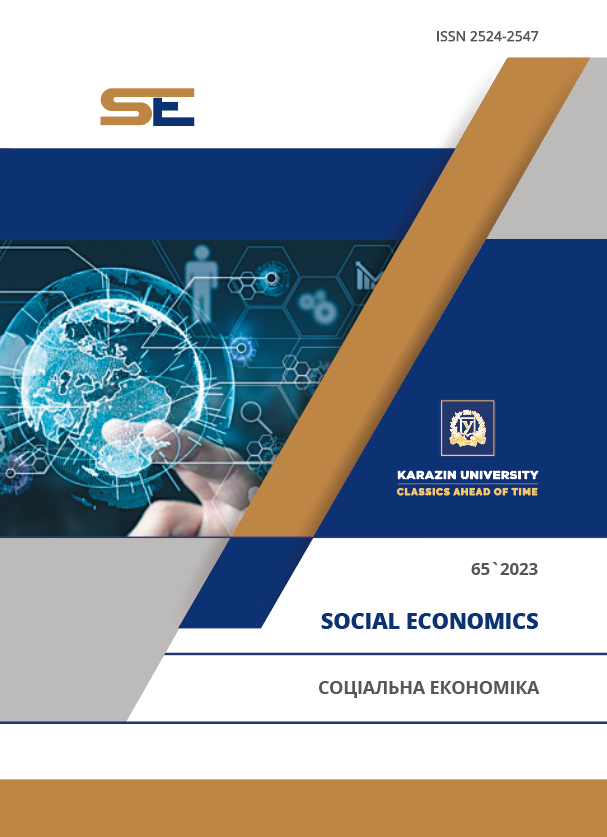ВЗАЄМОДІЯ НАУКИ ТА ПОЛІТИКИ В РЕГІОНАЛЬНОМУ УПРАВЛІННІ НАВКОЛИШНІМ СЕРЕДОВИЩЕМ: ПРИКЛАД HELCOM У КОНТЕКСТІ БАЛТІЇ
Анотація
Регіональне екологічне співробітництво в Балтійському морі є провідною та «першопрохідною» моделлю управління екологічними проблемами на регіональному рівні. Випадок Балтії дуже часто наголошується з точки зору успішного впровадження необов’язкових рекомендацій щодо управління морським середовищем та політичної волі країн-учасниць щодо регіонального екологічного співробітництва. Незважаючи на чотири десятиліття зусиль, Балтійський регіон є своєрідним і унікальним випадком, де довгостроковий антропогенний тиск і його тендітна екосистема спричиняють ще більше проблем для держав регіону. У цьому дослідженні ми розглядали приклад Балтії з точки зору взаємодії науки та політики та використовували дані конференцій зацікавлених сторін HELCOM (Гельсінська комісія), організованих з 2006 по 2022 рік. Наука-політика розглядається як ключовий процес у захисті та управлінні навколишнім середовищем. Ми провели якісне дослідження на основі аналізу документів, відстежуючи взаємодію та діяльність основних зацікавлених сторін. Ми виявили, що Балтійський випадок привів до довготривалих традиційних науково-політичних процесів, де була сильна присутність наукового співтовариства, спрямованого на надання найкращих доступних наукових знань для захисту морського середовища та управління ним, а також розробку бази даних для прийняття рішень. Балтійська регіональна співпраця нещодавно просунулася до залучення громадянської науки, обговорення та підходів участі. Зацікавлені сторони погодилися, що для реалізації амбітної програми BSAP на практиці та конкретних дій подальший розвиток громадських рад, участь громадськості та багатосекторальне залучення є вирішальними для надійного виробництва знань у регіональному управлінні навколишнім середовищем. З інституційної точки зору, робочі групи в рамках HELCOM можуть сприяти посередництву наукових спільнот і суспільних діячів. Ці групи можуть служити прикордонними організаціями в науково-політичному інтерфейсі.
Завантаження
Посилання
HELCOM. (2017). First Version of the ‘State of the Baltic Sea’ Report – June 2017.
HELCOM. (2018). Implementation of the Baltic Sea Action Plan, HELCOM Activities Report 2017.
Maggio, A. R. (2019). Regional cooperation for protection of the marine environment in Southeast Asia: current trends in the South China Sea. Asia Pacific Journal of Environmental Law, 22(1), 160-170. doi: https://doi.org/10.4337/apjel.2019.01.08
Saunders, F. P., Gilek, M., & Linke, S. (2017). Knowledge for environmental governance: Probing science-policy theory in the cases of eutrophication and fisheries in the baltic sea. Journal of Environmental Policy & Planning, 19(6), 769-782. doi: https://doi.org/10.1080/1523908X.2017.1286575
Van den Hove, S., (2007). A rationale for science-policy interface. Futures, 39(7), 807-826. doi: https://doi.org/10.1016/j.futures.2006.12.004
Forsyth, T. (2004). Critical political ecology: the politics of environmental science. Routledge.
Spruijt, P., Knol, A. B., Vasileiadou, E., Devilee, J., Lebret, E., & Petersen, A. C. (2014). Roles of scientists as policy advisers on complex issues: a literature review. Environmental Science and Policy, 40, 16-25. doi: https://doi.org/10.1016/j.envsci.2014.03.002
Cross, M. K. D. (2013). Rethinking epistemic communities twenty years later. Review of International Studies, 39(1), 1-24.
Mukherjee, I., & Howlett, M. P. (2015). Who is a stream? Epistemic communities, instrument constituencies and advocacy coalitions in multiple streams subsystems. Epistemic Communities, Instrument Constituencies and Advocacy Coalitions in Multiple Streams Subsystems (April 10, 2015). Lee Kuan Yew School of Public Policy Research Paper, 15-18. doi: http://dx.doi.org/10.2139/ssrn.2593626
Cross, M. K. D. (2015). The limits of epistemic communities: EU security agencies. Politics and Governance, 3(1), 90-100. doi: https://doi.org/10.17645/pag.v3i1.78
Backer, H., Leppänen, J. M., Brusendorff, A. C., Forsius, K., Stankiewicz, M., Mehtonen, J., ... & Haaranen, T. (2010). HELCOM Baltic Sea Action Plan–A regional programme of measures for the marine environment based on the Ecosystem Approach. Marine pollution bulletin, 60(5), 642-649. doi: https://doi.org/10.1016/j.marpolbul.2009.11.016
Johansson, S., & Wulff, F. (2007). The MARE Research Program 1999-2006: Reflections on Program Management. Ambio, 36(2/3), 119-122.
Linke, S., Gilek, M., Karlsson, M., & Udovyk, O. (2014). Unravelling science-policy interactions in environmental risk governance of the Baltic Sea: comparing fisheries and eutrophication. Journal of Risk Research, 17(4), 505-523. doi: https://doi.org/10.1080/13669877.2013.794154
Tynkkynen, N. (2013). The challenge of environmental governance in the network society: The case of the baltic sea. Environmental Policy and Governance, 23(6), 395-406. doi: https://doi.org/10.1002/eet.1621
Burton, E., Wang, W., & White, R. (2019). An Introduction to the Science-Policy Interface Concept: What, Why, and How. Retrieved from https://eiui.ca/an-introduction-to-the-science-policy-interface-concept-what-why-and-how/.
HELCOM HSC. (2020). Outcome of the HELCOM Stakeholder Conference 2020. Retrieved from https://helcom.fi/wp-content/uploads/2020/03/Outcome-of-the-2020-HELCOM-Stakeholder-Conference.pdf.
VanDeveer, S. D. (2011). Networked baltic environmental cooperation. Journal of Baltic Studies, 42(1), 37-55. doi: https://doi.org/10.1080/01629778.2011.538516
HELCOM HSC. (2007). Outcome of the 2nd HELCOM stakeholder conference. Retrieved from https://helcom.fi/wp-content/uploads/2019/08/BSAP-CONF-2-2007_Outcome.pdf.
HELCOM HSC. (2021). HELCOM Stakeholder Conference 2021 (HSC2021) “Practically Implementing Ecosystem-Based Management”. Retrieved from https://helcom.fi/wp-content/uploads/2021/03/HSC2021-outcome.pdf.





